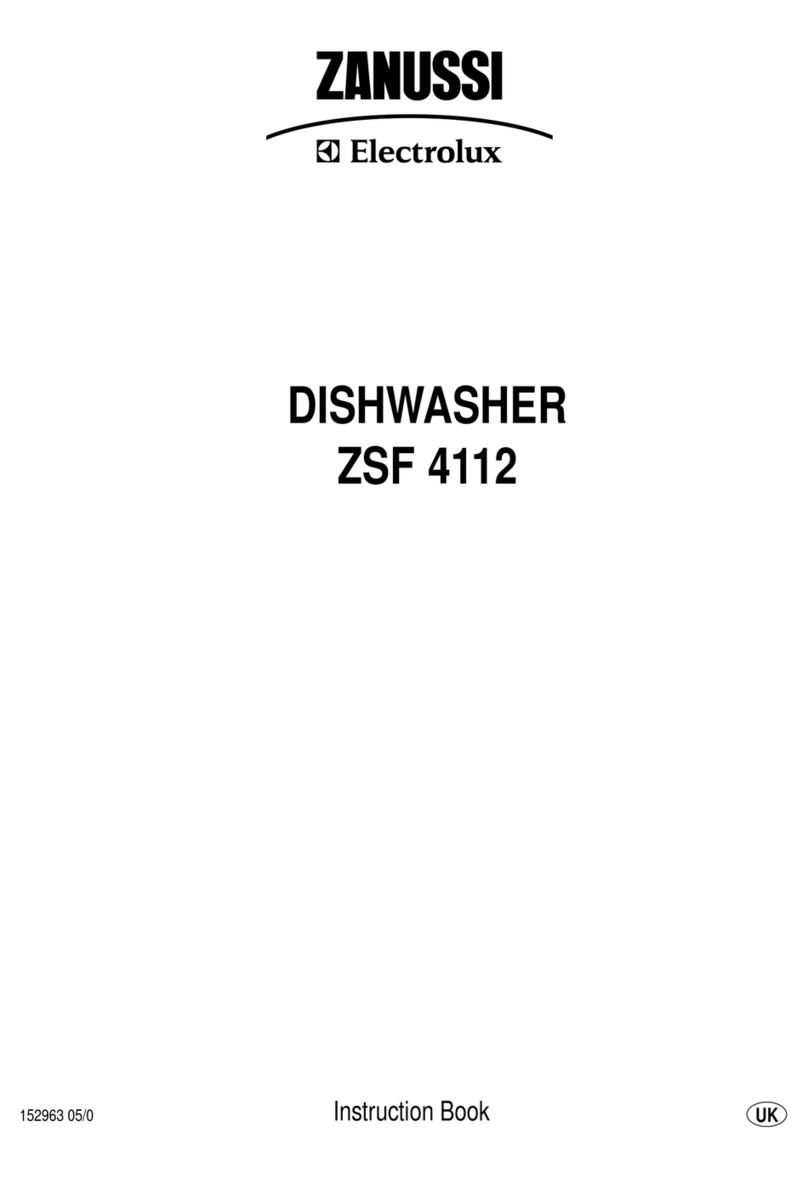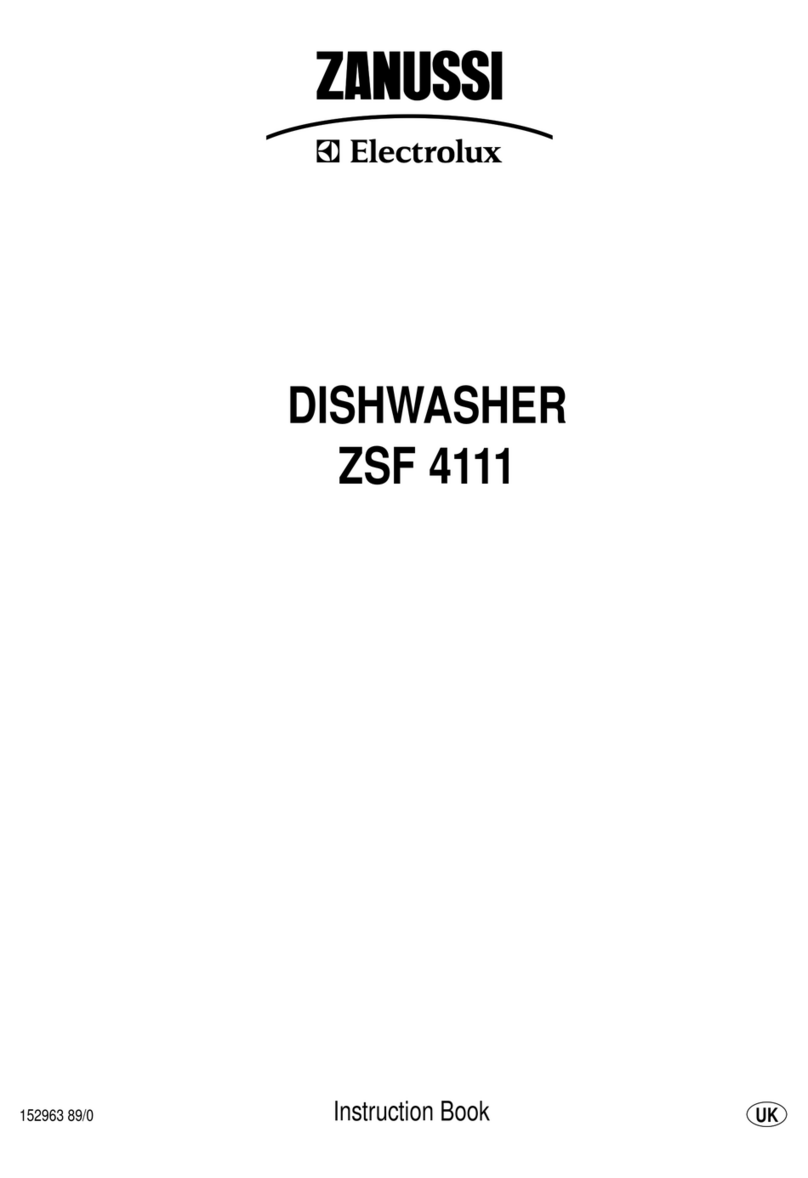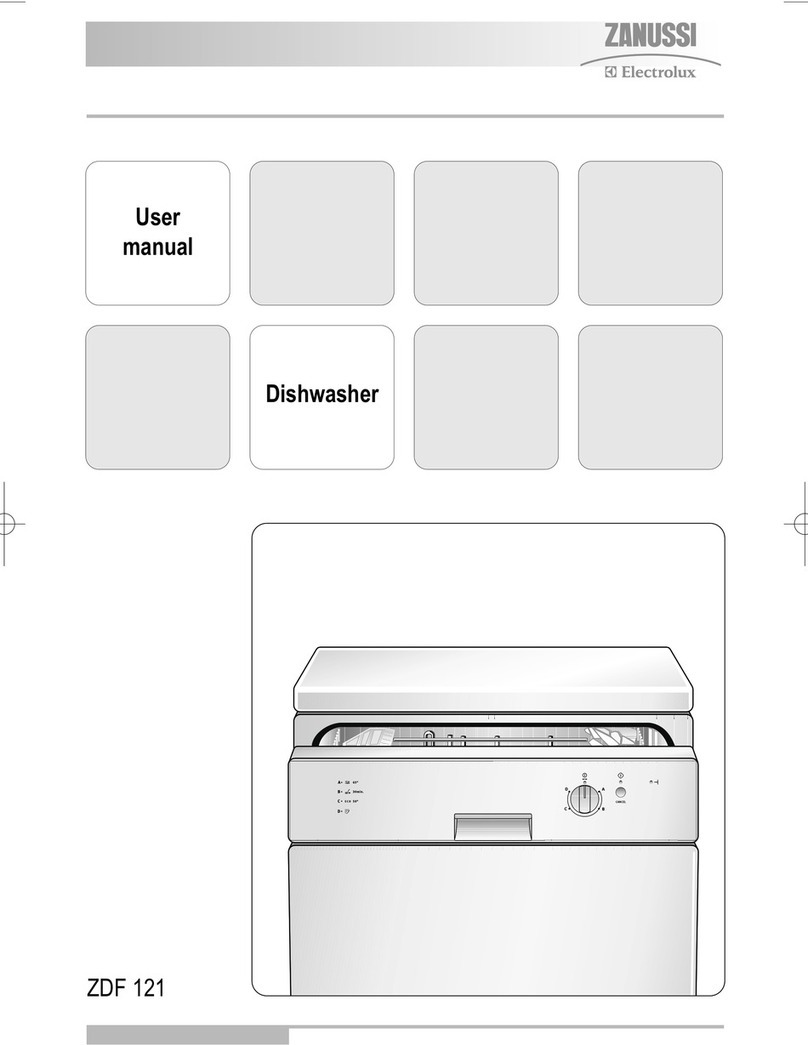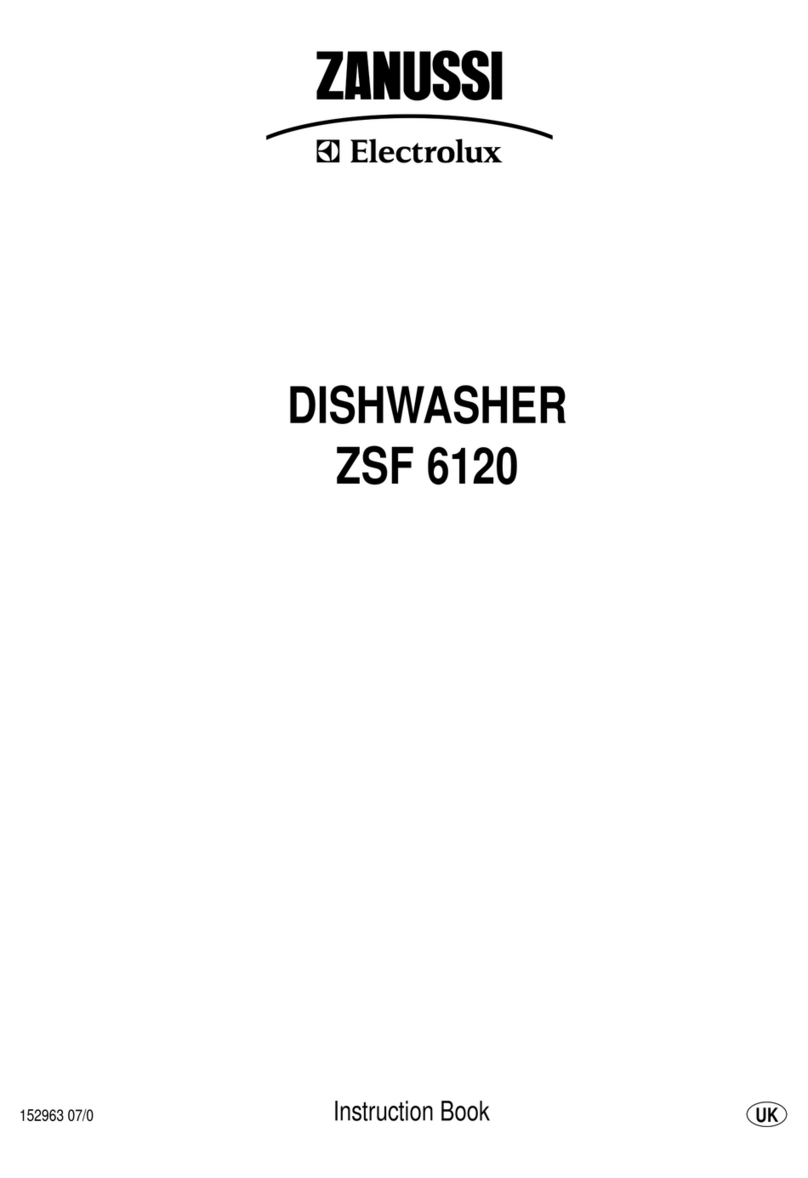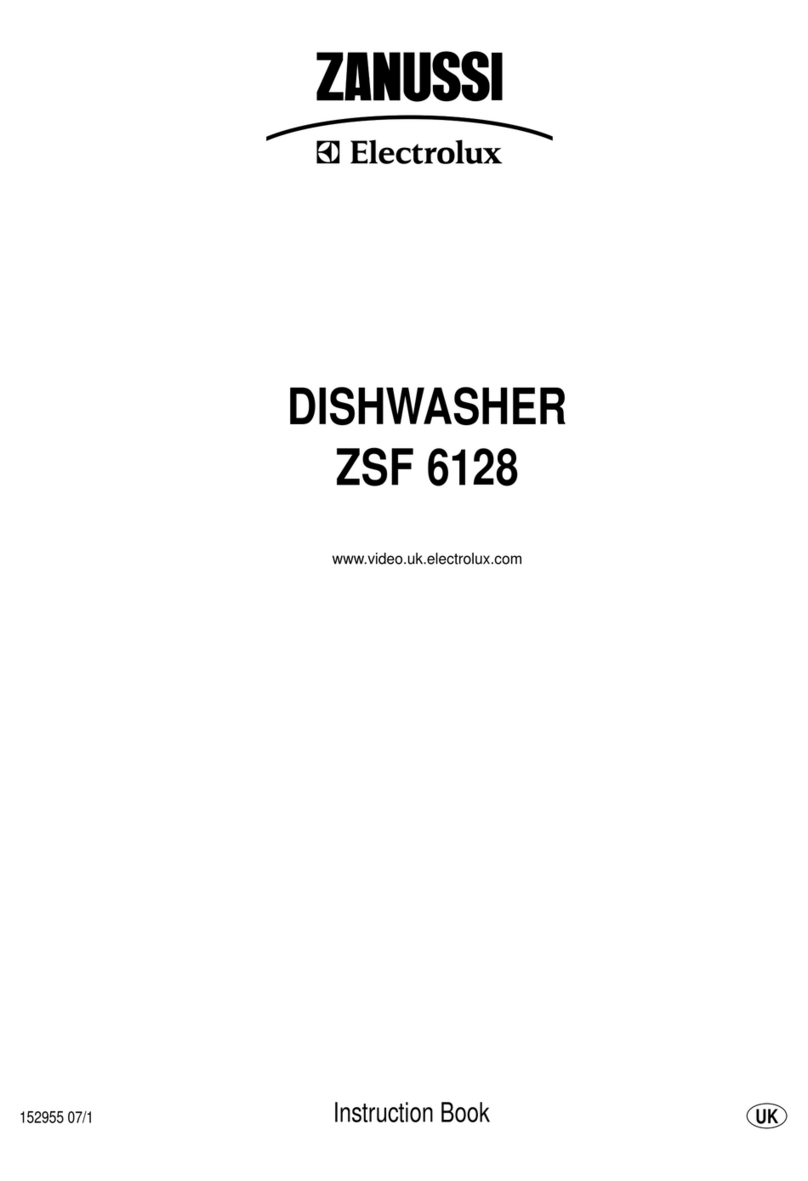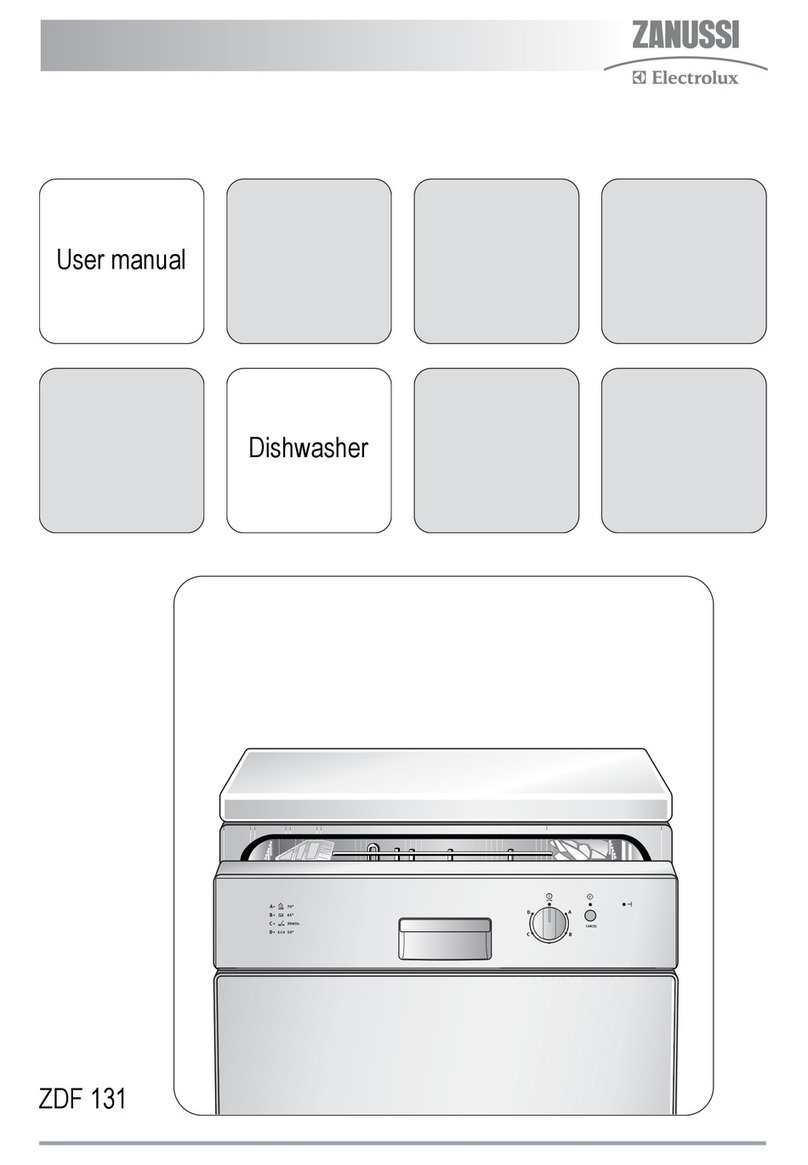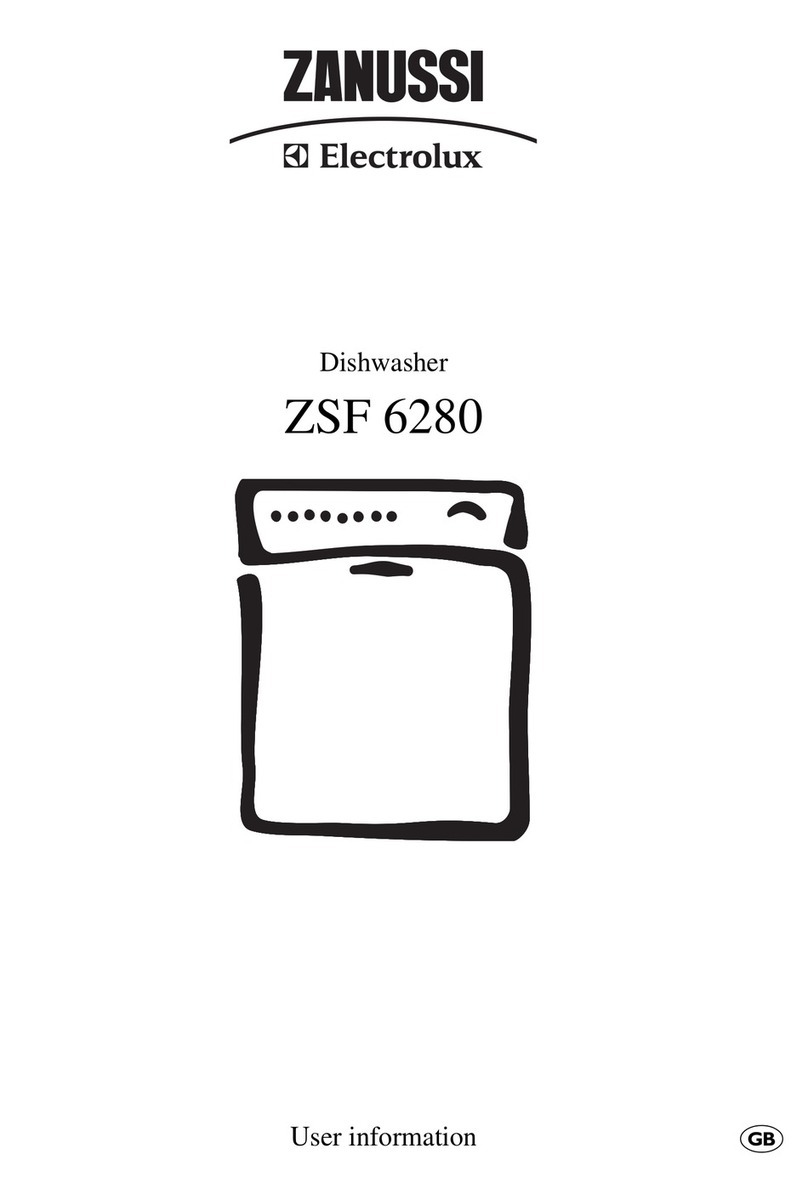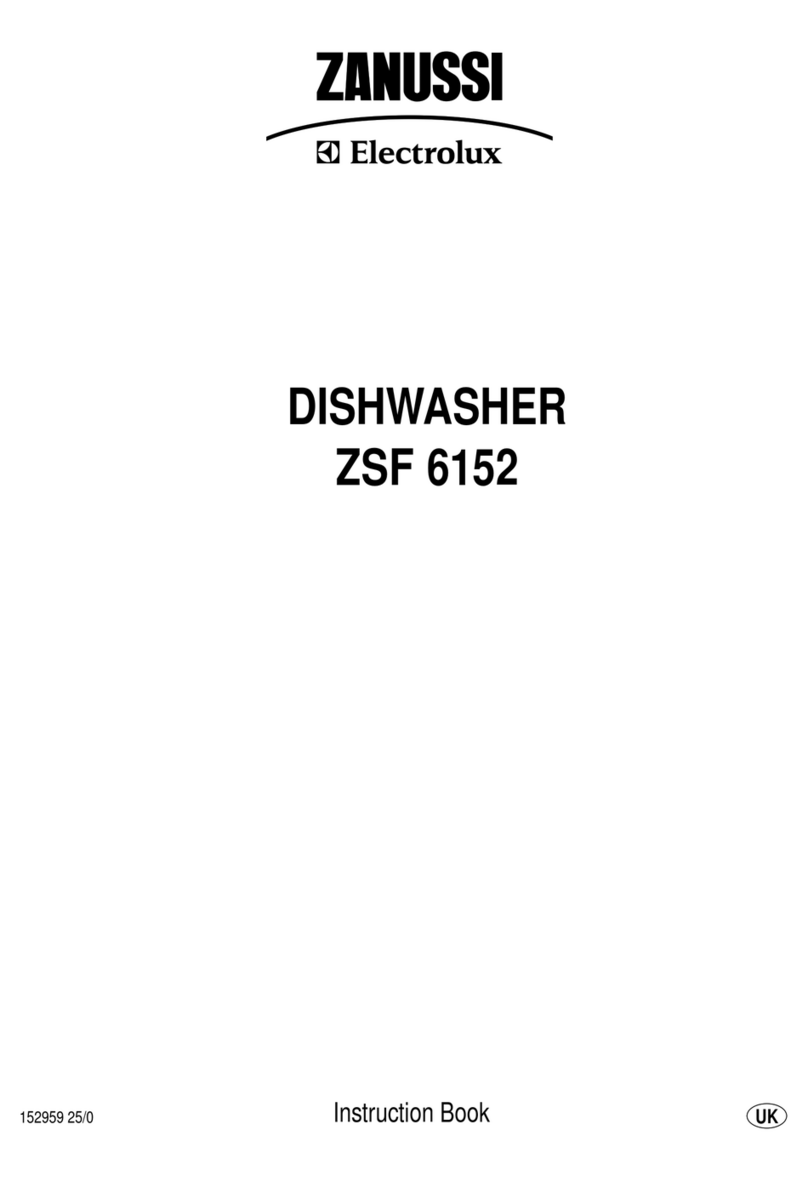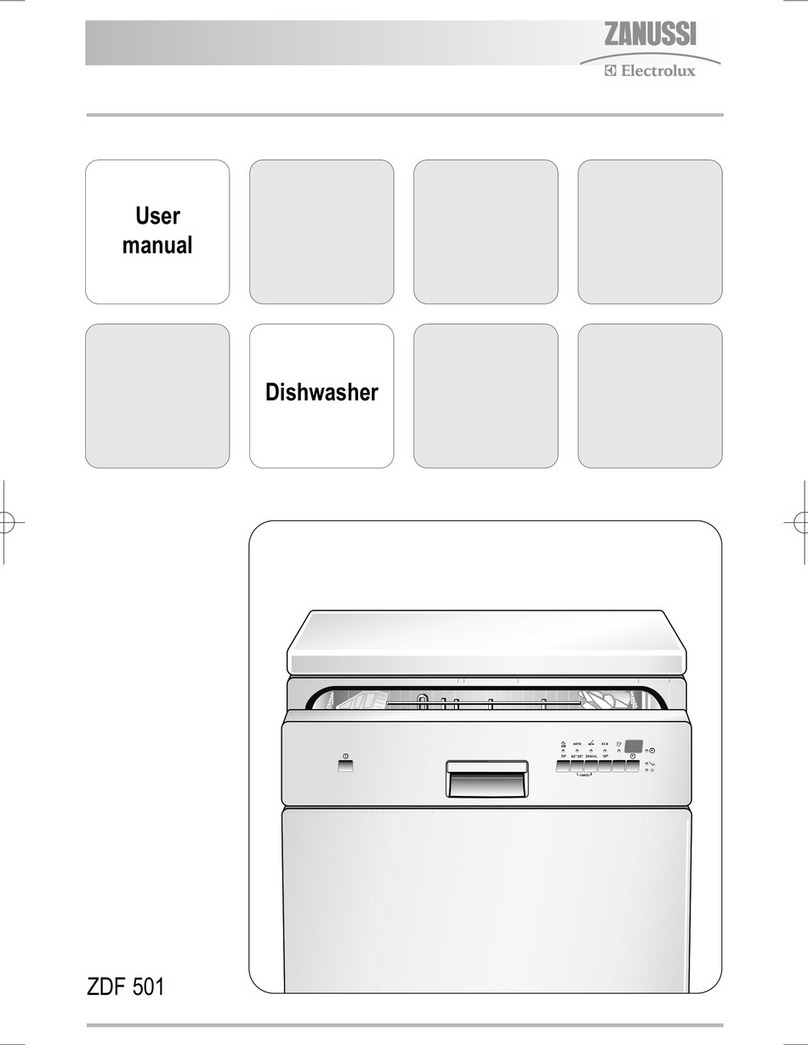21
1. Check that the baskets have been
loaded correctly and that the spray
arms can rotate freely
2. Turn on the water tap
3. Close the dishwasher door
4. Setting and starting the programme
Turn the programme selector dial clockwise until the
letter of the programme you wish to select corresponds
with the programme marker on the control panel (see
"Washing programmes" chart).
If necessary select the temperature of the main wash
according to the instructions given in the "Washing
programmes" chart (see "Required temperature push
button").
Depress the On/Off push button; the On/Off indicator
light will come on and the machine will start.
5. Interrupting a washing programme
Interrupt a washing programme in progress ONLY if
it’s absolutely necessary
To interrupt a washing programme
Attention! Hot steam may escape when the door is
opened. There is risk of scalding. Open the door
carefully.
●Open the dishwasher door; the programme will stop.
Close the door; the programme will start from the
point in which it was interrupted.
●Pressing the On/Off (in this case the On/Off indicator
light turns off). Press the On/Off push button again;
the programme will start from the point in which it was
interrupted.
6. End of the washing programme
The dishwasher will automatically stop.
Switch off the dishwasher by pressing the On/Off push
button, the On/Off indicator light turns off.
Hot steam may escape from the appliance when opening
the door immediately after the end of the programme,
therefore, open the door carefully.
Unloading the dishwasher
Hot dishes are sensitive to knocks. The dishes should
therefore be allowed to cool down before removing from
the appliance.
Leave the dishes in the dishwasher for approx. 15
minutes, with the door ajar, after the end of programme
so that they dry better and will be cooler.
Empty the lower basket first and then the upper one; this
will avoid water dripping from the upper basket onto the
dishes in the lower one.
When the washing programme has finished, it is
recommended that the dishwasher is unplugged and the
water tap turned off.
Starting a washing programme
Fitting under a counter
(kitchen worktop or sink)
By removing the machine’s worktop, you can install it under a
close fitting sink unit or a pre-existing top, providing the
dimensions of the recess correspond to those shown in the
picture.
Proceed as follows:
Remove the machine’s worktop by unscrewing the two front
retaining screws, pull from the front and slide out the rear slots,
lifting the worktop.
Insert the machine after adjusting height and levelling with the
adjustable feet. When inserting the machine, ensure that the
water inlet and drain hoses are not kinked or squashed.
If the dishwasher is later used as a free-standing appliance,
the original worktop must be re-mounted.
The plinth on free-standing appliances is not adjustable.
Levelling
ood levelling is essential for correct closure and sealing of
the door.
When the appliance is correctly levelled, the door will not catch
on either side of the cabinet.
If the door does not close correctly, loosen or tighten the
adjustable feet until the machine is perfectly level.
